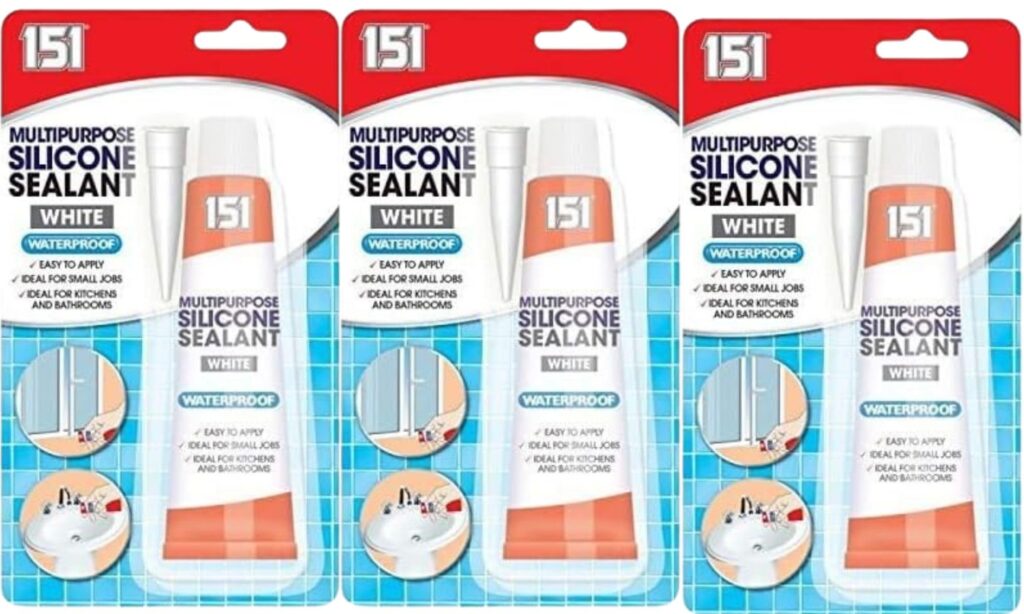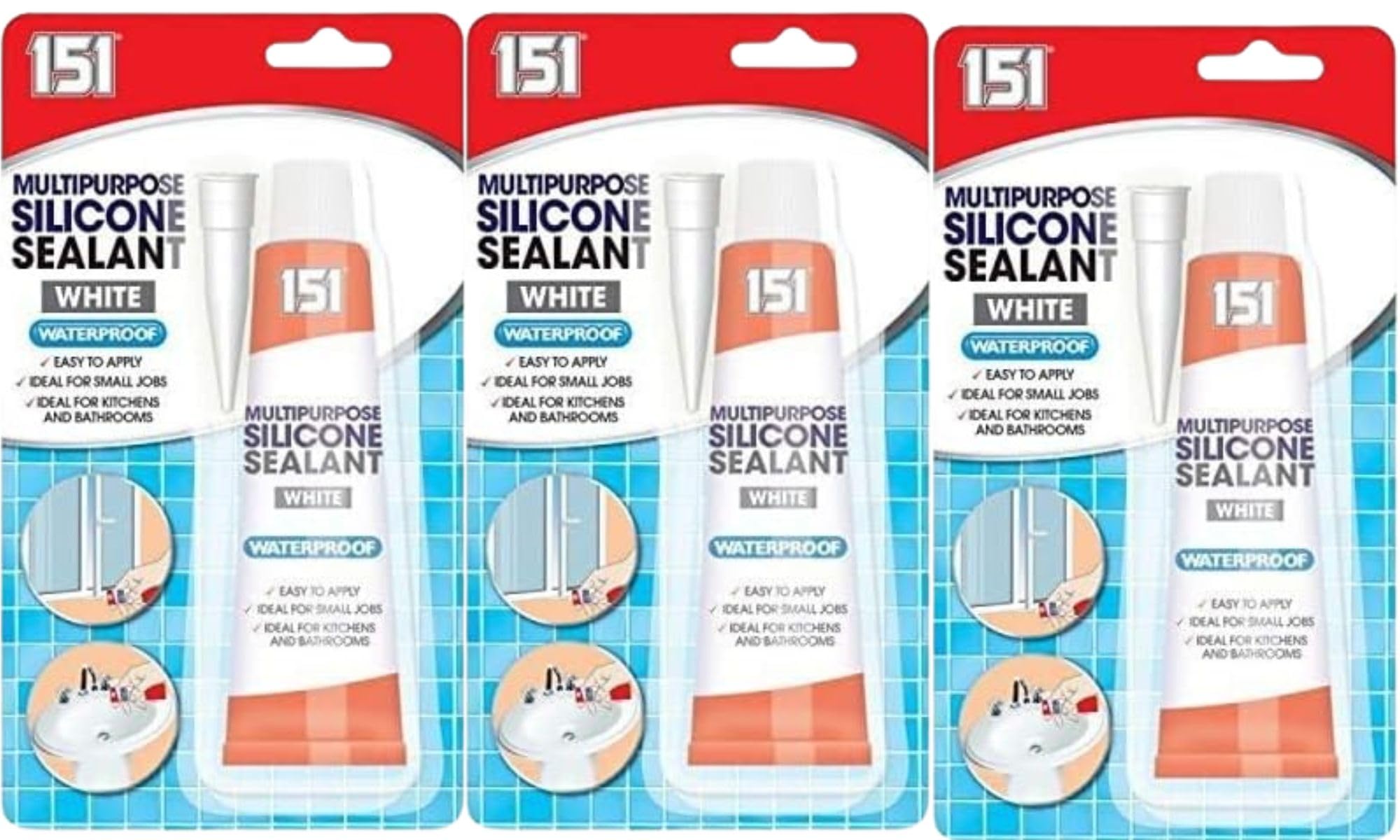
How to Effectively Whiten Silicone Sealant: A Comprehensive Guide
Silicone sealant is a versatile material used in various applications, from sealing bathroom fixtures to weatherproofing windows. However, over time, silicone sealant can become discolored, stained, or even mildewed, leading to an unsightly appearance. This article provides a comprehensive guide on how to effectively whiten silicone sealant, restoring its original clean look and extending its lifespan. We’ll explore various methods, from simple household solutions to more specialized cleaning products, ensuring you have the knowledge to tackle any level of discoloration. Keeping your silicone sealant white not only improves the aesthetics of your space but also helps maintain hygiene and prevent further damage.
Understanding Silicone Sealant and Discoloration
Before diving into the whitening process, it’s crucial to understand what silicone sealant is and why it discolors. Silicone sealant is a synthetic polymer that provides a flexible and waterproof seal. Its properties make it ideal for areas prone to moisture, such as bathrooms and kitchens. However, its porous nature also makes it susceptible to staining and discoloration. Common causes of discoloration include:
- Mold and Mildew: These thrive in damp environments and can penetrate the sealant, causing dark spots and discoloration.
- Hard Water Stains: Mineral deposits from hard water can leave a dull, white film on the sealant.
- Soap Scum: Residue from soaps and detergents can build up over time, creating a sticky surface that attracts dirt and grime.
- Dirt and Grime: Everyday dirt and grime can accumulate on the sealant, especially in high-traffic areas.
- Oxidation: Over time, exposure to air and sunlight can cause the silicone to yellow.
Understanding the cause of the discoloration is the first step in choosing the appropriate whitening method. Knowing the type of stain helps determine the best approach for restoring your silicone sealant.
Preventative Measures to Keep Silicone Sealant White
Prevention is always better than cure. Taking proactive steps can significantly reduce the need for frequent whitening. Here are some preventative measures:
- Regular Cleaning: Wipe down silicone sealant regularly with a mild detergent and water to prevent the buildup of dirt and grime.
- Proper Ventilation: Ensure adequate ventilation in bathrooms and kitchens to reduce moisture levels, which can prevent mold and mildew growth.
- Use Mildew-Resistant Sealant: When installing new sealant, opt for a mildew-resistant formula. These sealants contain additives that inhibit the growth of mold and mildew.
- Dry Surfaces After Use: After showering or using the sink, dry the surrounding surfaces, including the sealant, to minimize moisture.
- Avoid Harsh Chemicals: Harsh chemicals can damage the sealant and make it more prone to discoloration. Stick to mild, non-abrasive cleaners.
By incorporating these preventative measures into your routine, you can significantly prolong the life and appearance of your silicone sealant.
Whitening Silicone Sealant: Step-by-Step Guide
If your silicone sealant has already become discolored, don’t worry. Here’s a step-by-step guide on how to whiten silicone sealant effectively:
Method One: Using Baking Soda and Vinegar
This method is a natural and effective way to remove mild stains and grime. Baking soda is a gentle abrasive, while vinegar is a natural disinfectant and cleaner.
- Prepare the Paste: Mix baking soda and vinegar to form a thick paste.
- Apply the Paste: Apply the paste to the discolored silicone sealant, ensuring it covers the entire area.
- Let it Sit: Allow the paste to sit for at least 30 minutes, or longer for more stubborn stains.
- Scrub Gently: Use a soft-bristled brush or sponge to gently scrub the sealant.
- Rinse Thoroughly: Rinse the area with water and dry with a clean cloth.
- Repeat if Necessary: If the stains persist, repeat the process.
Method Two: Using Bleach
Bleach is a powerful disinfectant and whitening agent, but it should be used with caution. Always wear gloves and eye protection when working with bleach, and ensure the area is well-ventilated.
- Dilute the Bleach: Mix bleach with water in a ratio of 1:10.
- Apply the Solution: Apply the bleach solution to the discolored silicone sealant using a sponge or spray bottle.
- Let it Sit: Allow the solution to sit for 15-30 minutes.
- Scrub Gently: Use a soft-bristled brush to gently scrub the sealant.
- Rinse Thoroughly: Rinse the area thoroughly with water to remove all traces of bleach.
- Dry the Area: Dry the area with a clean cloth.
Caution: Avoid prolonged exposure to bleach, as it can damage the sealant. Never mix bleach with ammonia, as this can create toxic fumes. Bleach is a strong agent, so always test it on an inconspicuous area first to ensure it doesn’t damage the silicone sealant.
Method Three: Using Hydrogen Peroxide
Hydrogen peroxide is a milder alternative to bleach and can be effective for removing lighter stains and mold. It is also safer to use around children and pets.
- Apply Hydrogen Peroxide: Pour or spray 3% hydrogen peroxide directly onto the discolored silicone sealant.
- Let it Sit: Allow the hydrogen peroxide to sit for at least an hour, or overnight for more stubborn stains.
- Scrub Gently: Use a soft-bristled brush to gently scrub the sealant.
- Rinse Thoroughly: Rinse the area with water and dry with a clean cloth.
- Repeat if Necessary: If the stains persist, repeat the process.
Method Four: Using Commercial Cleaners
Several commercial cleaners are specifically designed to remove mold, mildew, and stains from silicone sealant. These cleaners often contain stronger chemicals and may require specific safety precautions.
- Choose a Cleaner: Select a cleaner that is specifically formulated for silicone sealant.
- Follow Instructions: Carefully read and follow the manufacturer’s instructions on the cleaner’s label.
- Apply the Cleaner: Apply the cleaner to the discolored silicone sealant as directed.
- Let it Sit: Allow the cleaner to sit for the recommended time.
- Scrub Gently: Use a soft-bristled brush to gently scrub the sealant.
- Rinse Thoroughly: Rinse the area thoroughly with water and dry with a clean cloth.
Always test the cleaner on a small, inconspicuous area first to ensure it doesn’t damage or discolor the silicone sealant. [See also: Best Silicone Sealant Cleaners]
Dealing with Stubborn Stains
If the above methods don’t completely remove the stains, you may need to try a more aggressive approach. Here are some tips for dealing with stubborn stains:
- Prolonged Soaking: Allow the cleaning solution to soak on the stain for a longer period. This can help loosen the stain and make it easier to remove.
- Multiple Applications: Apply the cleaning solution multiple times, scrubbing gently between each application.
- Steam Cleaning: Use a steam cleaner to loosen and remove stubborn stains. The high temperature and pressure can help break down the stain and lift it from the sealant.
- Professional Cleaning: If all else fails, consider hiring a professional cleaning service. They have access to specialized equipment and cleaning solutions that can effectively remove even the most stubborn stains.
When to Replace Silicone Sealant
Even with regular cleaning and whitening, silicone sealant will eventually deteriorate and need to be replaced. Here are some signs that it’s time to replace your silicone sealant:
- Cracking or Peeling: If the sealant is cracking or peeling, it is no longer providing a proper seal and should be replaced.
- Hardening: If the sealant has become hard and brittle, it is no longer flexible and may crack easily.
- Persistent Staining: If the sealant is heavily stained and cannot be effectively whitened, it may be time to replace it.
- Mold Growth: If mold has penetrated deep into the sealant and cannot be removed, it is best to replace it to prevent further mold growth.
Replacing silicone sealant is a relatively straightforward process, but it requires careful preparation and attention to detail. [See also: How to Replace Silicone Sealant]
Choosing the Right Silicone Sealant for Replacement
When replacing silicone sealant, it’s essential to choose the right type for your specific application. Consider the following factors:
- Application: Choose a sealant that is specifically designed for the intended application, such as bathroom, kitchen, or window sealing.
- Mildew Resistance: Opt for a mildew-resistant sealant to prevent future mold and mildew growth.
- Color: Choose a sealant that matches the surrounding surfaces. White sealant is a popular choice for its clean and versatile appearance.
- Type: There are two main types of silicone sealant: acetic (acid-curing) and neutral-curing. Acetic sealants are more common and are suitable for most applications, while neutral-curing sealants are better for sensitive materials such as metal.
Conclusion
Whitening silicone sealant is an essential part of maintaining a clean and hygienic home. By understanding the causes of discoloration and implementing preventative measures, you can significantly reduce the need for frequent cleaning. When discoloration does occur, the methods outlined in this guide, from natural solutions to commercial cleaners, can effectively restore your silicone sealant to its original white appearance. Remember to always prioritize safety and follow the manufacturer’s instructions when using cleaning products. And when the sealant reaches the end of its lifespan, be sure to replace it with a high-quality sealant to ensure a long-lasting and effective seal. Keeping your silicone sealant clean and white not only enhances the aesthetic appeal of your home but also contributes to a healthier living environment. Regular maintenance and timely action are key to preventing long-term issues and keeping your silicone sealant looking its best. Addressing the discoloration of silicone sealant promptly prevents further degradation and maintains its protective qualities. Always remember, a little effort goes a long way in preserving the integrity and appearance of your silicone sealant. Don’t underestimate the power of regular cleaning to keep your silicone sealant sparkling white! Effectively whiten silicone sealant by following these steps.

